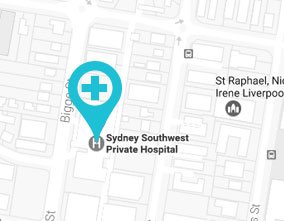Shinbone Fractures
The tibia or shin bone is a major bone of the leg which connects the knee to the ankle. A tibial fracture is a break in the continuity of the shin bone (tibia).
Types
- Fractures of proximal tibia: A proximal tibial fracture is a break in the upper part of the shin bone or tibia. Proximal tibial fractures may or may not involve the knee joint. Fractures that enter the knee joint may cause joint imperfections, irregular joint surfaces, and improper alignment in the legs. This can lead to as joint instability, arthritis, and loss of motion. These fractures are caused by stress or trauma or in a bone already compromised by disease, such as cancer or infection. Proximal tibia fractures can result in injury to the surrounding soft tissues including skin, muscle, nerves, blood vessels, and ligaments.
- Tibial shaft fractures: A tibial shaft fracture is a break that occurs along the length of the tibia or shin bone (larger bone of the lower leg) between the knee and ankle joints. These fractures can occur while playing sports such as soccer and skiing.
The symptoms of tibia fracture include painful weight bearing movements, tenseness around the knee, limitation of movement and deformity around the knee. In some individuals, impairment of blood supply secondary to the fracture may result in a pale or cool foot. Patients may also experience numbness or feelings of ‘pins and needles’ in the foot as a result of associated nerve injury.
The diagnosis of tibial fracture is based on the medical history including history of any previous injuries, complete physical examination and imaging studies. The physician will evaluate a soft tissue around the joint to identify any signs of nerve or blood vessel injury. Multiple X-rays and other imaging studies such as CT and MRI scans may be used to identify the location and severity of the fracture.
The management of the fracture is based on the severity of the fracture, medical condition of the patient and the patient’s lifestyle.
Non-surgical treatment comprises of immobilizing the fractured site with the help of casts or braces to prevent weight bearing and to help the healing process. X-rays are taken at regular intervals to assess the healing process. Weight bearing, and movement are initiated gradually, depending on the nature of the injury and the condition of the patient.
Surgical treatment is considered to maintain alignment of the fractured bone. External or internal fixators may be used to align the fractured bone segments. If the fracture does not involve the knee joint, rods and plates can be used to stabilize the fracture. For a fracture involving the knee joint, a bone graft may be required to prevent the knee joint from collapsing. An external fixator is used when the surrounding soft tissue is severely damaged, as the use of plate and screw may be harmful.
As the tibial fracture usually involves the weight bearing joint it may cause long term problems such as loss of knee motion or instability and long-term arthritis. Hence a rehabilitation program is initiated along with the treatment comprising of instructions on weight bearing, knee movements, and the use of external devices such as braces.





